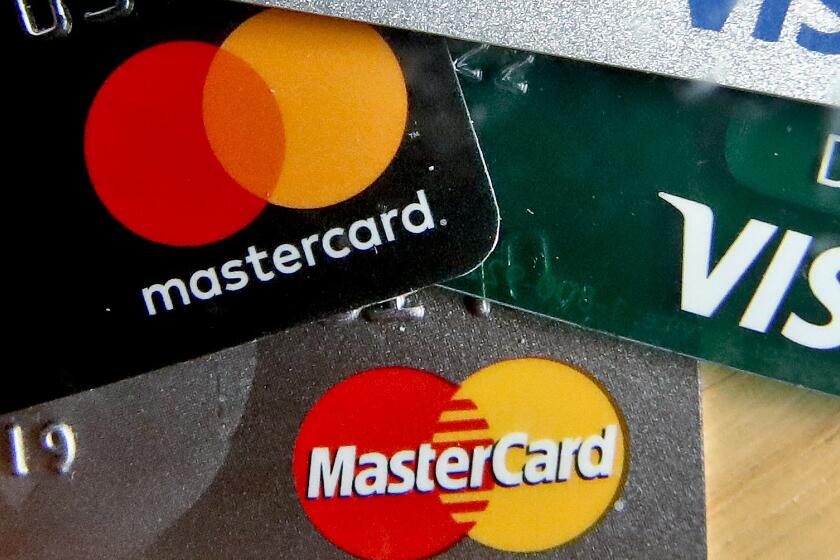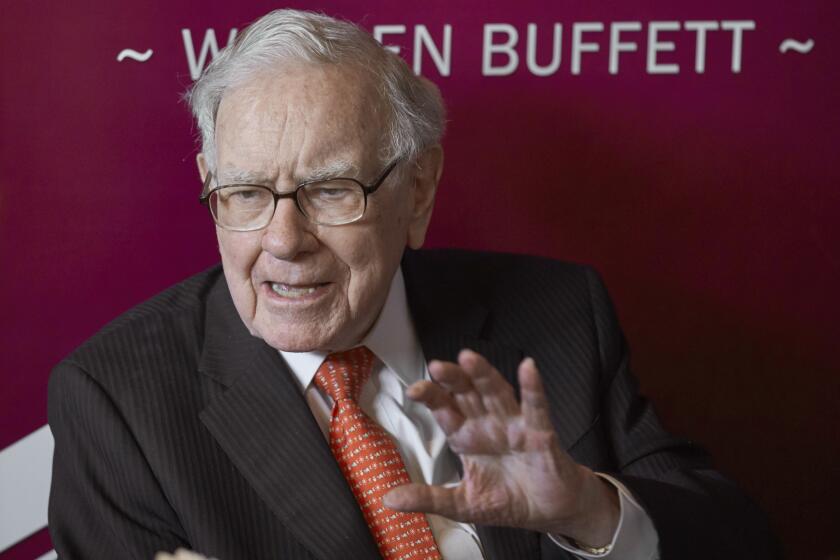Dizzying Drops for Six Flags
- Share via
As the peak summer season nears its climax at Magic Mountain in Valencia and Six Flags Inc.’s other amusement parks, the company itself can’t seem to climb out of a stomach-churning descent.
The thrill-ride operator is expected to lose money for the fifth straight year in 2003. It lost $122 million in the first six months alone as attendance fell 7.2% from a year earlier, the company said last week.
Already saddled with debt, Six Flags was hurt further by the sluggish economy, weak consumer confidence and lousy spring weather in the Midwest and East.
“We’re deeply disappointed with ... the year-to-date performance,” Kieran Burke, Six Flags’ longtime chief executive, told analysts last week.
Burke said Six Flags was keeping a tight rein on costs, including reducing spending on new multimillion-dollar rides and other improvements, “for a year or two until the economy begins to recover.”
But Magic Mountain -- home of such intense thrill rides as Scream, X and Superman the Escape -- will be exempt. The park, operating in one of the most hotly competitive theme-park markets in the nation, is too important to go very long without new attractions, Six Flags executives said.
“In a market like Los Angeles, we will continue to add significant new rides on a periodic basis,” Jim Dannhauser, Six Flags’ chief financial officer, said in an interview. He called Magic Mountain “the best thrill park in the region.”
Six Flags, based in Oklahoma City, owns both 160-acre Magic Mountain and the adjacent Six Flags Hurricane Harbor water park. The company also has 37 other parks in 15 states, Europe, Canada and Mexico. Together they drew 44.2 million people last year.
Amusement parks nationwide are grappling with the poor economy and the tourism downturn since the Sept. 11 terrorist attacks. Walt Disney Co. and Vivendi Universal, operator of the Universal Studios parks, also are seeing lower attendance and dwindling revenues.
But Six Flags was losing money even when the economy was stronger at the turn of the millennium. Then last year, the company lost $106 million on revenue of $1 billion, including a $61-million charge related to an accounting change.
Six Flags’ shares, which traded above $30 in 1999, closed Friday at $4.92, unchanged for the day, on the New York Stock Exchange. One analyst, David Miller of Sanders Morris Harris in Los Angeles, last week downgraded the stock to an outright “sell.”
There is no reason to own the shares, Miller said in a report, partly because “we are at the zenith of the summer season and ... any potential gains in the stock would have already played themselves out.”
Six Flags’ total market value is about $455 million. In contrast, investors value competitor Cedar Fair -- which owns only 11 amusement and water parks, including Knott’s Berry Farm in Buena Park -- more than three times higher, at $1.4 billion.
Among the investors feeling Six Flags’ pain is the nation’s richest man. Microsoft Corp. Chairman Bill Gates owns more than 10 million shares, or about 11.6%, of the theme-park company, according to Six Flags’ regulatory filings.
The stock is held by Gates’ firm Cascade Investment in Kirkland, Wash., which makes various investments on behalf of the billionaire. Cascade’s manager, Michael Larson, declined to comment.
A key culprit behind Six Flags’ perennial losses is the company’s $2.3 billion of long-term debt, much of it incurred as the firm gobbled up several parks from 1998 to 2001 and spent hundreds of millions of dollars on new rides. Hefty interest payments on that debt have made it impossible for Six Flags to turn a profit even when the economy and weather cooperated.
“They over-leveraged themselves,” said Kit Spring, an analyst with investment firm Stifel Nicolaus & Co.
Dannhauser said “that was a building period,” and that the payoff from those investments had been delayed by the sour economy and poor weather this year. Six Flags continues to generate strong cash flow, he added. And combined with the cost controls, that “will enable us to accomplish a substantial de-leveraging over time.”
Even so, Six Flags’ credit rating is in danger of being downgraded by Standard & Poor’s Corp., partly because of “a lackluster operating outlook for the key third quarter” ending Sept. 30, S&P; analyst Hal Diamond said in a recent report.
The first Six Flags park was built 42 years ago in Arlington, Texas, by oilman Angus Wynne Jr., who was trying to make a few bucks from vacant land until he could fully develop it. The park quickly prospered and Six Flags expanded the concept.
Six Flags was bought in 1998 by another chain, Premier Parks Inc., which in 2000 changed its name to Six Flags because it carried better brand awareness among consumers.
Asked by the analysts whether Six Flags might sell some parks to raise cash, Burke indicated that the company would consider shedding “excess lands” around its parks and other “non-core” assets. But he said executives would not “do anything that’s rash or that’s not well thought out.”
Spring, the Stifel Nicolaus analyst, said Six Flags’ stock had promise not only because the firm’s performance might improve but also because the company was a potential takeover target.
“At this point investors are looking at Six Flags like an option,” Spring said. “Things have gotten about as bad as they can get,” so the stock isn’t likely to go much lower, barring another terrorist attack or other major external shock.
But “if they can turn Six Flags around, this is a stock that can double or triple,” said Spring, who does not own any Six Flags shares. His firm also doesn’t have an investment-banking relationship with the company.
Meanwhile, an acquirer with deep pockets “could buy Six Flags and refinance all of their debt at a substantially lower rate,” saving about $50 million annually, Spring said. Six Flags’ interest payments last year totaled $228 million.
For now, Six Flags has to find more ways of drawing customers so that it can exploit any economic upswing. Among other things, the company is considering rolling out a new advertising campaign.
“Our challenge for 2004 is to arrest the attendance decline of the past two seasons,” Burke told the analysts, adding that “we are not simply shrugging this off as, well, it was just a tough year with weather and the economy.”
More to Read
Inside the business of entertainment
The Wide Shot brings you news, analysis and insights on everything from streaming wars to production — and what it all means for the future.
You may occasionally receive promotional content from the Los Angeles Times.











